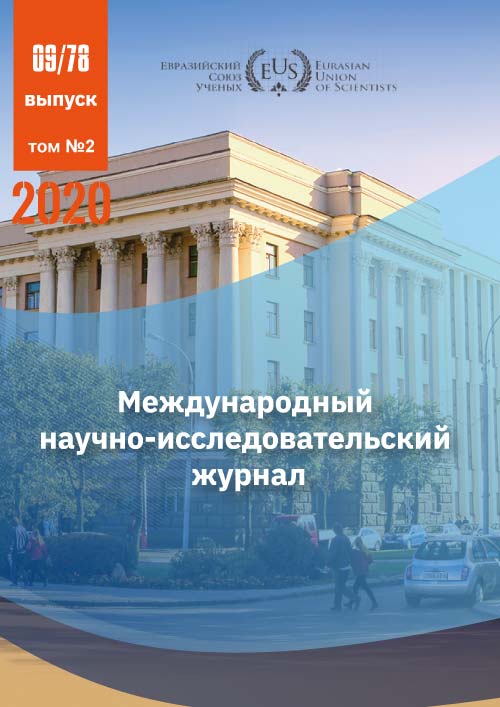FEATURES OF REGULATION OF BREATH
Abstract
In modern physiology, very simplified perceptions of such an essential system for the body as the respiratory system have taken root. The system analysis showed that at a physical load of more than 50 W, the tissue respiratory subsystem is activated, providing a volume blood flow rate adequate to the amount of oxygen consumed, and in the external respiratory subsystem the regulation on oxygen voltage in arterial blood is activated, and the regulation on carbon dioxide voltage is deactivated. The role of respiratory frequency in increasing the rate of diffusion through the alveolar capillary membrane is shown. For physiologists, medical professionals and trainers.
References
2. Васильев Г. Ф. Основы регуляции, адаптированные для физиологии. British journal of innovation in science and technology, том 3, № 4, c. 25-34. DOI: 10.22406/bjist-18-3.4-25-34
3. Васильев Г. Ф. Особенности параметрических систем биорегуляции. British journal of innovation in science and technology, том 3, № 5, c. 23-32. DOI: 10.22406/bjist-18-3.5-23-32
4. Васильев Г. Ф. Система биорегуляции двигательной единицы. British journal of innovation in science and technology, том 3, № 6, c. 35-44. DOI:
10.22406/bjist-18-3.6-35-44
5. Васильев Г. Ф. Система дыхания. American Scientific Journal, 2(2), c. 54-59.
6. Тевс Г., Легочное дыхание // Физиология человека: в 3-х томах: перевод с англ., под ред. Р. Шмидта и Г. Тевса (Мир, 1996), - с. 567-604.
7. Doll E. J., Keul J., and Maiwald C., Oxygen tension and acid-base equilibria in venous blood of working muscle // “Amer. J. of Physiol.” 1968, N1, 215, с. 23-29.
8. Qingguang Zhang, Morgane Roche, Kyle W. Gheres, Emmanuelle Chaigneau, Ravi T. Kedarasetti, William D. Haselden, Serge Charpak & Patrick J. Drew, Cerebral oxygenation during locomotion is modulated by respiration. [Электронный ресурс https://www.nature.com/articles/s41467-019-13523-5] NATURE COMMUNICATIONS | (2019) 10:5515 | https://doi.org/10.1038/s41467-019-13523-5.
CC BY-ND
A work licensed in this way allows the following:
1. The freedom to use and perform the work: The licensee must be allowed to make any use, private or public, of the work.
2. The freedom to study the work and apply the information: The licensee must be allowed to examine the work and to use the knowledge gained from the work in any way. The license may not, for example, restrict "reverse engineering."
2. The freedom to redistribute copies: Copies may be sold, swapped or given away for free, in the same form as the original.







